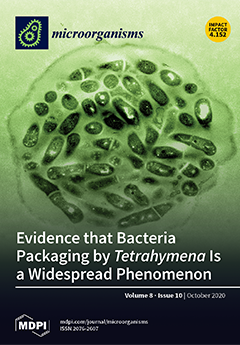The production of diverse and extended spectrum β-lactamases among
Escherichia coli and ESKAPE pathogens is a growing threat to clinicians and public health. We aim to provide a comprehensive analysis of evolving trends of antimicrobial resistance and β-lactamases among
E. coli and ESKAPE pathogens (
Enterococcus faecium, Staphylococcus aureus, Klebsiella pneumoniae, Acine to bacter baumannii, Pseudomonas aeruginosa, and
Enterobacter species) in the Arabian region. A systematic review was conducted in Medline PubMed on papers published between January 2000 and February 2020 on countries in the Arab region showing different antibiotic resistance among
E. coli and ESKAPE pathogens. A total of
n = 119,144 clinical isolates were evaluated for antimicrobial resistance in 19 Arab countries. Among these clinical isolates, 74,039 belonged to
E. coli and ESKAPE pathogen. Distribution of antibiotic resistance among
E. coli and ESKAPE pathogens indicated that
E. coli (
n = 32,038) was the predominant pathogen followed by
K. pneumoniae (
n = 17,128),
P. aeruginosa (
n = 11,074), methicillin-resistant
S. aureus (MRSA,
n = 4370),
A. baumannii (
n = 3485) and
Enterobacter spp. (
n = 1574). There were no reports demonstrating
Enterococcus faecium producing β-lactamase. Analyses revealed 19 out of 22 countries reported occurrence of ESBL (Extended-Spectrum β-Lactamase) producing
E. coli and ESKAPE pathogens. The present study showed significantly increased resistance rates to various antimicrobial agents over the last 20 years; for instance, cephalosporin resistance increased from 37 to 89.5%, fluoroquinolones from 46.8 to 70.3%, aminoglycosides from 40.2 to 64.4%, mono-bactams from 30.6 to 73.6% and carbapenems from 30.5 to 64.4%. An average of 36.9% of the total isolates were reported to have ESBL phenotype during 2000 to 2020. Molecular analyses showed that among ESBLs and Class A and Class D β-lactamases,
blaCTX-M and
blaOXA have higher prevalence rates of 57% and 52.7%, respectively. Among Class B β-lactamases, few incidences of
blaVIM 27.7% and
blaNDM 26.3% were encountered in the Arab region. Conclusion: This review highlights a significant increase in resistance to various classes of antibiotics, including cephalosporins, β-lactam and β-lactamase inhibitor combinations, carbapenems, aminoglycosides and quinolones among
E. coli and ESKAPE pathogens in the Arab region.
Full article






